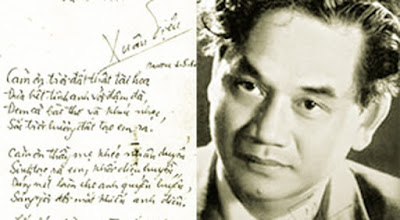COLLABORATIVE SPECTRUM SENSING OVER FADING CHANNELS IN COGNITIVE RADIO NETWORK
| Title: | COLLABORATIVE SPECTRUM SENSING OVER FADING CHANNELS IN COGNITIVE RADIO NETWORK |
| Authors: | Tran, Viet Duc |
| Keywords: | RADIO NETWORK;MOBILE NETWORKS |
| Issue Date: | 2013 |
| Publisher: | ĐHCN |
| Abstract: | 4th generation (4G) mobile communication networks have resolved many problems of 3rd generation mobile networks. Following the boom development of communications, it has a dramatically increase in the number of user terminals that leads to foresee the limitations of 4G mobile communication standards. It is expected that beyond 4G mobile networks or 5G mobile networks will provide not only very high transmission rate but also utilize radio resource effectively under the constraints of high user density and limited radio spectrum. So we will present a vision for beyond 4G mobile networks or 5G mobile cellular networks based on the notions from expert international forums and well-known published papers. To solve communications demand of high user density areas, cognitive radio and femtocell are proposed as core technologies for future wireless communications and for providing wireless voice and broadband services to customers in small areas such as home, office or designated locations, which are deployed and installed by user terminals without depending on mobile network operator. In our research, we study a framework for cellular-femtocell network optimization based on the cognitive interference management methodology. We first introduce a feasible architecture model of cognitive cellular-femtocell networks which we consider as a mobile network model of beyond 4G mobile communications. In this model, femtocells, what are deployed to extent coverage and reduce the load for macro cellular networks, are equipped with cognitive radio function that it allows operating in the same radio spectrum with macro cellular network. Based on the sensed information from its distinct environment, femtocell can fully reuse all available spectrums or reuse limited by predefining. With the interference level sensed from its environment, femtocell can autonomously allocate a proper channel which has strong signal strength and minimum interference to macro environment. With our best knowledge about the cognitive cellular-femtocell networks, we propose two novel channel allocation schemes which will be compared with two existing channel allocation schemes, and then design a simulation program that content all of our research to demonstrating and supporting the research work. With those schemes, cellular-femtocell networks will have self-configuration procedures to adapt resource management effectively. Performance study results obtained by the simulation program, show that the two proposed channel allocation schemes outperform other existing schemes in terms of unsuccessful probability of new connection requests considering user’s QoS constraint. |
| URI: | http://repository.vnu.edu.vn/handle/VNU_123/14517 |
| Appears in Collections: | Bài đăng tạp chí (LIC) |


Nhận xét
Đăng nhận xét